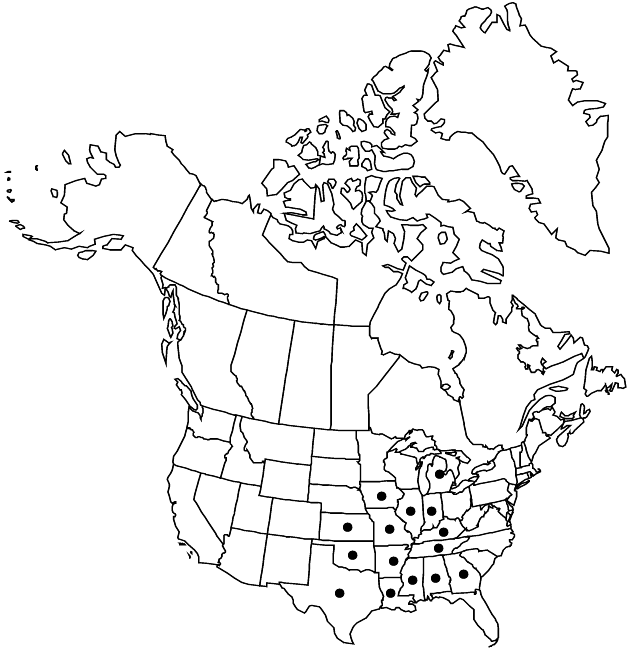Difference between revisions of "Vernonia missurica"
Herb. Raf., 28. 1833.
FNA>Volume Importer |
FNA>Volume Importer |
||
| Line 31: | Line 31: | ||
-->{{#Taxon: | -->{{#Taxon: | ||
name=Vernonia missurica | name=Vernonia missurica | ||
| − | |||
|authority=Rafinesque | |authority=Rafinesque | ||
|rank=species | |rank=species | ||
| Line 46: | Line 45: | ||
|publication year=1833 | |publication year=1833 | ||
|special status= | |special status= | ||
| − | |source xml=https://jpend@bitbucket.org/aafc-mbb/fna-data-curation.git/src/ | + | |source xml=https://jpend@bitbucket.org/aafc-mbb/fna-data-curation.git/src/eaa6e58056e40c9ef614d8f47aea294977a1a5e9/coarse_grained_fna_xml/V19-20-21/V19_266.xml |
|tribe=Asteraceae tribe Vernonieae | |tribe=Asteraceae tribe Vernonieae | ||
|genus=Vernonia | |genus=Vernonia | ||
Revision as of 19:18, 16 December 2019
Plants 6–12(–20+) dm. Stems puberulent. Leaves mostly cauline; blades elliptic to lance-ovate or lanceolate, 6–16(–20+) cm × 18–48+ mm, l/w = 2.5–4(–6+), abaxially usually puberulent to tomentose or pannose (hairs ± erect, ± curled), seldom glabrate, resin-gland-dotted, adaxially scabrellous, glabrescent, not resin-gland-dotted. Heads in corymbiform-scorpioid arrays. Peduncles 3–35 mm. Involucres broadly campanulate to urceolate, (6–)7–10+ × 5–9+ mm. Phyllaries 50–70+ in 6–7 series, sparsely scabrellous, glabrescent (seldom resin-gland-dotted), margins ciliolate, the outer lanceolate, 1–2 mm, inner linear-oblong to oblong, 6–7(–9+) mm, tips acute or rounded-apiculate. Florets 30–55+. Cypselae 3.5–4; pappi stramineous to whitish, outer scales 25–30, 0.5–1.1 mm, contrasting with 35–40+, 6–8+ mm inner bristles. 2n = 34.
Phenology: Flowering Jul–Sep.
Habitat: Prairies, loamy to sandy soils
Elevation: 30–200 m
Distribution

Ala., Ark., Ga., Ill., Ind., Iowa, Kans., Ky., La., Mich., Miss., Mo., Okla., Tenn., Tex.
Discussion
Selected References
None.